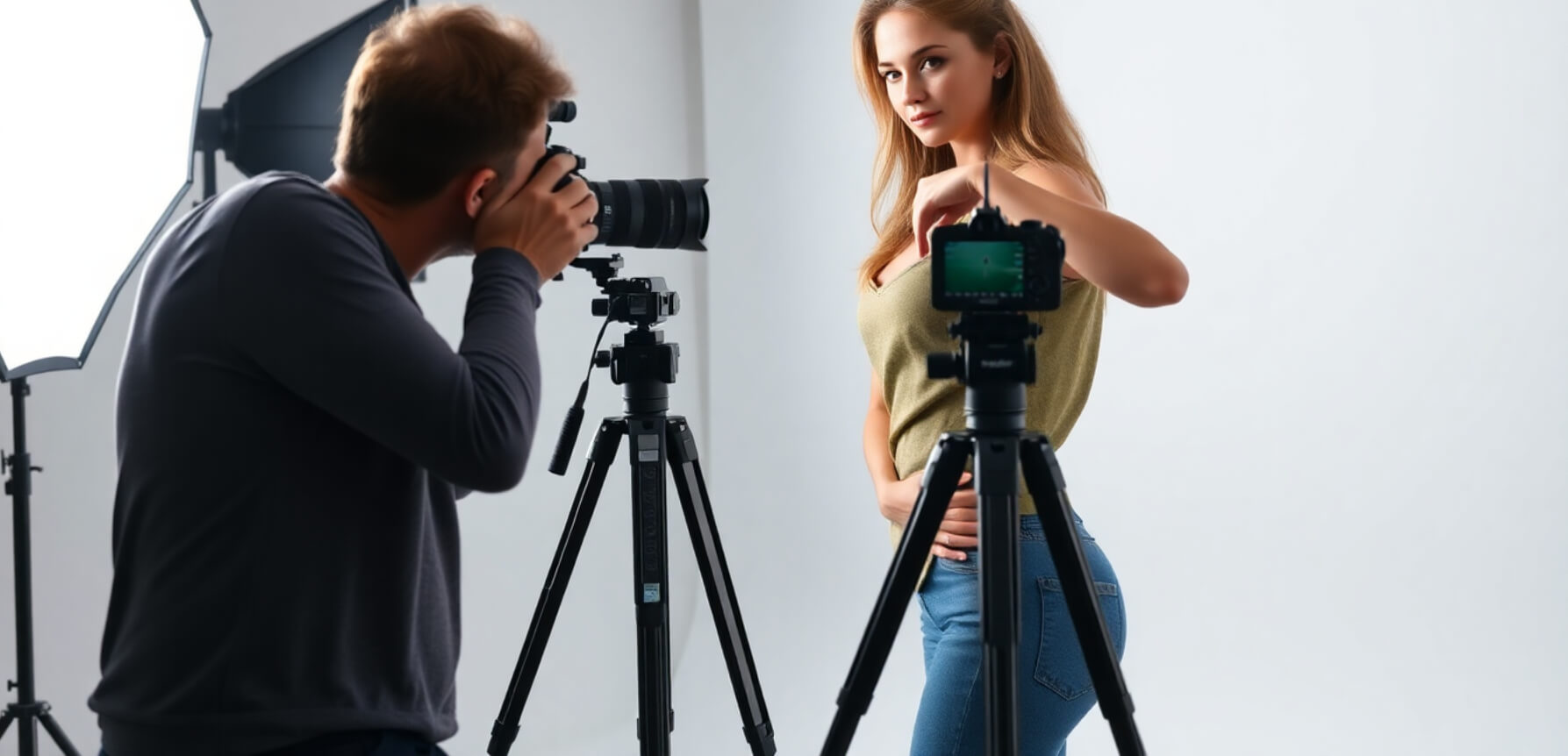May 27, 2025

Portrait photography is an art that goes beyond simply snapping pictures—it’s about capturing the essence of your subject. From expressive emotions to powerful storytelling, portraits can convey a wide range of messages. Whether you're a seasoned photographer or just starting out with a smartphone, you can apply creative techniques to make your portraits stand out in 2025.
This guide presents a collection of innovative portrait photography ideas that will take your photos from ordinary to extraordinary. Whether you're exploring lighting effects, experimenting with new editing styles, or perfecting your setup, these ideas will inspire you to think outside the box.
Split lighting is one of the most iconic portrait lighting techniques. It involves positioning the light at a 90° angle to your subject, which results in one half of their face being brightly lit and the other half remaining in shadow. This setup is perfect for creating dramatic, high-contrast portraits with a cinematic feel.
📖 What is Split Lighting in Portrait Photography – A Creative Guide for Beginners
One of the most creative ways to elevate a portrait is through double exposure photography. This technique overlays two images into a single frame, blending the subject's portrait with other elements like landscapes, textures, or abstract patterns. Double exposure can add a surreal or dreamy quality to your portraits, allowing you to tell a deeper story or evoke specific emotions.
📖 How to Create Artistic Double Exposure Photos
Studio lighting offers complete control over your portrait results. With a variety of light modifiers like softboxes, umbrellas, and grids, you can create portraits with various moods—soft, dramatic, or even colorful. Using backlighting, key lighting, or even colored gels can help transform your shots from ordinary to professional-level images.
📖 Photography Artificial Lighting – A Beginner’s Guide to Studio and Creative Lighting
Incorporating cinematic elements into your portrait photography gives your images a sense of depth, emotion, and drama. Use color grading, dramatic expressions, and backgrounds that complement the subject to create a movie-like quality. Golden hour lighting, where the sun is low in the sky, adds a soft, warm glow to your subject, making it the perfect time for cinematic portraiture.
📖 How to Take Cinematic Wedding Photos
A clean background is crucial for portraiture, as distractions can take the focus away from your subject. Whether you're working with a busy background or dealing with unwanted objects, object removal tools can help you eliminate distractions and create a minimalist look. These tools can be invaluable, especially for professional headshots or corporate portraits.
📖 How to Remove Unwanted Objects from Photos – Best Tools and Tips

Color correction ensures that your portrait colors are accurate and true to life, while color grading allows you to give your images a distinctive mood or style. Whether you want warm, cool, or high-contrast tones, color grading can help you set the atmosphere of the shot.
📖 Color Correction vs Color Grading in Photography – Key Differences Explained
Mobile apps like Snapseed, Lightroom, and Photoshop Express have evolved to offer many of the same tools found in desktop editors. These apps make it easy to apply filters, retouch skin, and enhance lighting—perfect for editing on the go.
📖 Best Photo Editing Apps in 2025 – Edit Like a Pro on Mobile or Desktop
Having the right gear is essential for taking high-quality portraits. A camera that can handle depth of field and produce beautiful bokeh is key. Pair it with a sturdy tripod to ensure sharp, stable shots—especially when shooting in low light or for long exposures.
📖 Best Tripods for Travel and Studio Photography in 2025
📖 Best Camera for Professional Photography Beginners in 2025
Why not turn your passion for portrait photography into a side hustle? Consider submitting your best shots to stock photo websites or offering freelance portrait services. There are numerous platforms that allow you to sell your work, from EyeEm to Shutterstock, so you can make money while doing what you love.
📖 Best Photo Selling Websites 2025
📖 How to Sell Your Photos Online for Passive Income in 2025
📖 How to Price Your Photography Services in 2025 – Step-by-Step Pricing Guide
For photographers looking to preserve memories, AI-based restoration tools offer a way to breathe new life into old or damaged family portraits. These tools can repair color, detail, and sharpness, making your vintage images look as though they were just taken.
📖 Best Photo Restoration Software in 2025 – Revive Your Memories
In 2025, portrait photography is all about creativity and technical mastery. From innovative lighting setups and creative overlays to mobile apps that allow for professional edits, the tools and techniques available today make it easier than ever to create breathtaking portraits. By experimenting with these ideas, you’ll not only expand your portfolio but also have fun while capturing the unique personalities of your subjects.
Stay up to date with the newest tips, gear reviews, and step-by-step guides to elevate your photography journey from home and beyond.